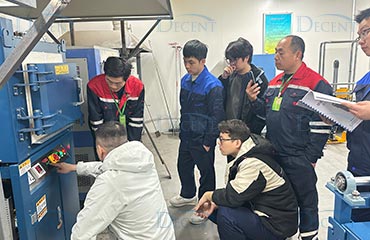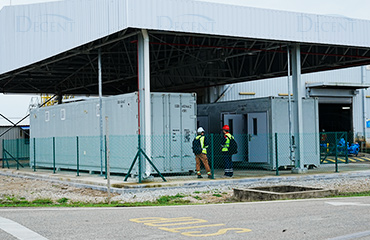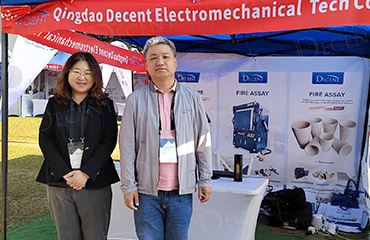Steps And Content of Sample Preparation From Mine (2)
Ensuring adequate representation of the research sample
Large samples are usually used for mineral processing tests, and the number of ore samples is large. Before formally entering the optional research, it needs to go through four processes of screening, crushing, mixing and sorting. The particle size of the ore sample after crushing can reach 1~3mm.
In process mineralogy research, an appropriate number of samples are taken from these finely divided samples according to the needs of the work, after cleaning, sieving, and agglomeration, they are ground into light (thin) flakes and placed under a microscope for observation.
The samples used to study the mineralogy of the sorting product process were taken from the samples of the beneficiation process described above. However, the product ore samples obtained according to the reduction formula cannot be directly used for the observation of the process mineralogy, and must be deslimed and screened.
Desliming is the removal of fine mud (mainly refers to particles below 5-10μm). Because when the ore particles in the sample are attached by the mud, the true distribution of the minerals is partially or completely masked. In addition, the viscous slush not only makes it impossible for the observer to obtain the actual size distribution of the ore particles in the product, but also is prone to a series of other artifacts. The presence of slime will increase the error of the observation results in light, and the observation data will be unusable if it is heavy.
The commonly used desliming method is wet screening. The fine sieve (400 mesh or 325 mesh) containing the material should be just immersed under the water surface of the water container, and rinsed with a thin stream of water, so that the fine mud on the sieve flows through the sieve hole and falls into the container. The product left on the sieve is poured into a porcelain basin, dried in an oven, and then sieved with a set of sieves. The purpose of screening is to facilitate observation under a microscope (especially a stereo microscope) on the one hand, and to reduce observation errors and facilitate data processing on the other hand. Make the fine mud on the sieve flow through the sieve holes and fall into the container. The sieved product is poured into a porcelain basin, dried in an oven, and then sifted through a set of sieves. The purpose of screening is to facilitate observation under a microscope (especially a stereo microscope) on the one hand, and to reduce observation errors and facilitate data processing on the other hand.
When sampling in sorting tests or beneficiation products, there is a problem of sampling weight. Too many samples will not only make sample collection difficult, but also inconvenient for research; but if there are too few samples, it is difficult to ensure the representativeness of mineral samples.
The minimum weight of the sample is mainly related to the maximum particle size of the ore in the material, the characteristics of the mineral inlay, and the grade of the ore. It can usually be calculated by the following formula: G=Kdt , where
G—The minimum weight of the sample, ㎏;
d———the maximum particle size of the particles in the sample, mm;
K, t—respectively factor and exponent.
The K factor is related to the content, particle size and uniformity of dyeing of useful components. The index t is related to the hardness, toughness, brittleness and degree of fissure of mineral conjoined bodies and grains.
K and t values can be determined experimentally. But it is generally selected based on existing experience. Table 1 shows the empirical values of K and t in the actual sampling in my country.
Since the t value is generally set to 2, the K value can be selected only considering the leaching uniformity. The degree of ore dissemination is generally only a rough estimate based on the naked eye and a magnifying glass. Therefore, in practical work, the sample weight is generally selected according to the values listed in Table 2.
From the above relationship between particle size and minimum sample weight, it can be seen that to obtain a representative sample with a smaller weight, the sample must be mixed and divided.
Table 1, K and t values of several ores
Ore type K t
Copper ore 0.10~0.20 2
Tungsten ore 0.20 2
Molybdenum 0.20 2
Vein tin ore 0.20 2
Phosphate rock 0.15 2
Placer tin ore 0.20 2
Gangue selected from tungsten ore 0.05 2
Table 2, Minimum weight of various ore samples (kg)
Particle size/mm ore impregnation characteristics
Very uniform medium uniform very uneven
20 15 40 160
10 4 10 35
8 2.5 6 20
5 1.20 2.50 7
3 0.45 0.90 2.50
2 0.20 0.40 0.90
1 0.06 0.10 0.18
Mixing: It is an extremely important work before the reduction. Only a well-mixed sample can begin to shrink. There are four commonly used methods.
(1) Shovel mixing method: First, use a shovel to pile the samples into a conical pile. Then set up a small wooden column nearby as the center, and lightly sprinkle the sample on the axis of the wooden column to form a new cone. A large number of samples can be mixed uniformly by this method of repeating the stacking of the cones.
(2) Ring cone method: turn the cone pile into a large ring with a shovel, and then pile the samples on both sides of the ring into a cone. Repeat several times to get a large sample.
(3) Rolling method: In the case of fine particles and a small amount of sample, this method can be used to mix well. Place the sample to be mixed on a parchment or tarpaulin, lift the opposite corners of the tarpaulin, and roll the sample back and forth. Change the opposite corner of the tarpaulin every time you roll. After 5-6 tumbles, the sample can be well mixed.
(4) Trough sampler method: A trough sampler is used to divide a small amount of fine-grained or silt ore samples into 2 equal parts, which can also achieve the purpose of mixing.
Subdivision: Commonly used stack cone quartering method or grid method. The former flattens a regular cone into a disc. Then use the cross plate to divide into 4 parts; use the diagonal bisected as the reduced sample. The grid method is to mix the sample evenly, spread it thinly on the tarpaulin or blanket, and then divide it into small squares. Use a flat-bottomed spatula to sample these squares one by one. Sometimes it can also be split in two with a trough divider.
The above points are the general principle requirements of process mineralogy for samples. In addition, due to the different research purposes and test objects, the emphasis on sample representativeness requirements is also different. Therefore, in order to be able to observe smoothly, the collected samples must be processed accordingly. Only in this way can a sufficient representativeness of the research sample be guaranteed. In the first stage, sufficient material guarantees are provided for the reliability of the ore process mineralogy data.
 Languages
Languages 中文
中文 English
English Español
Español Pусский
Pусский Deutsch
Deutsch العربية
العربية



